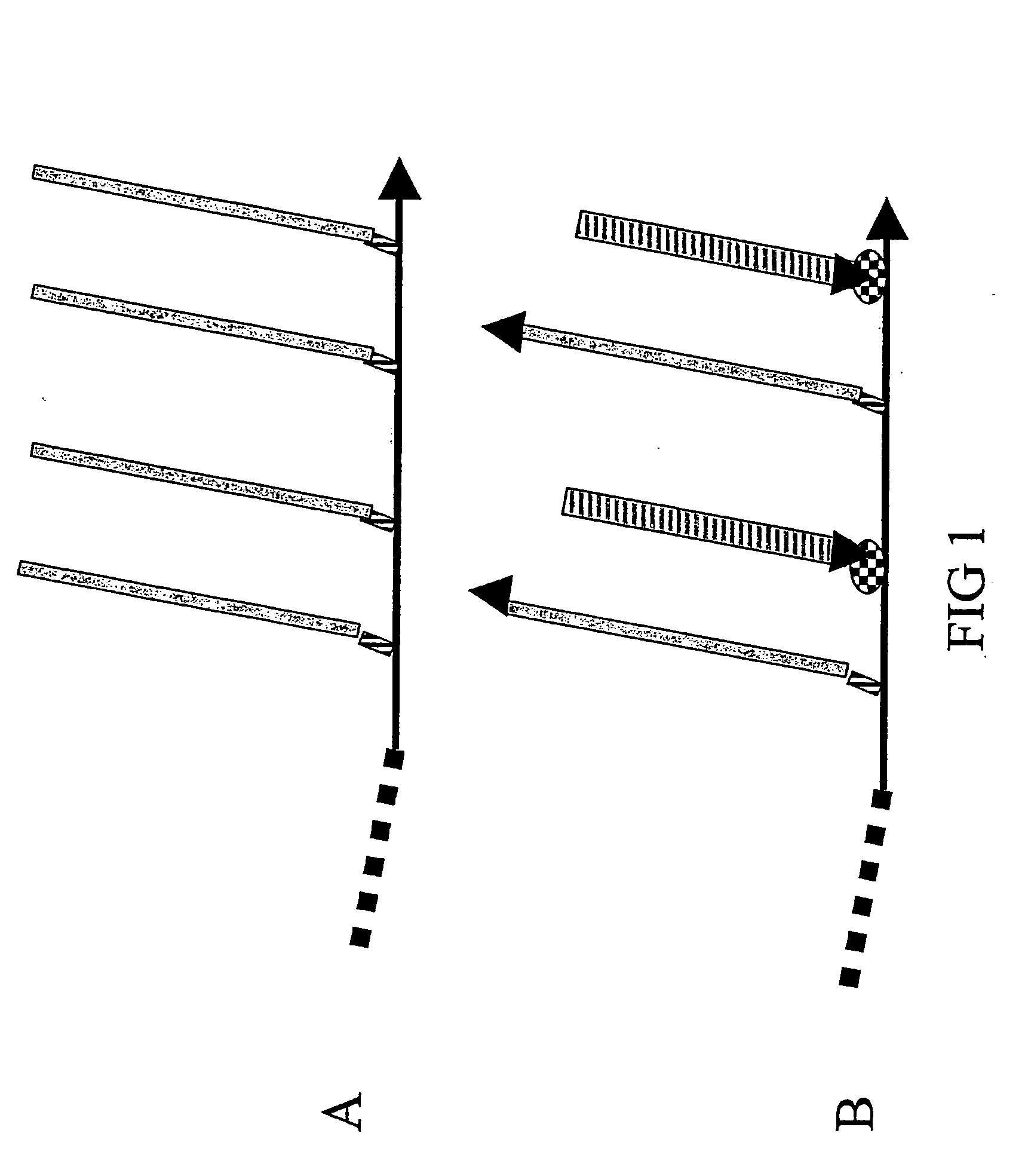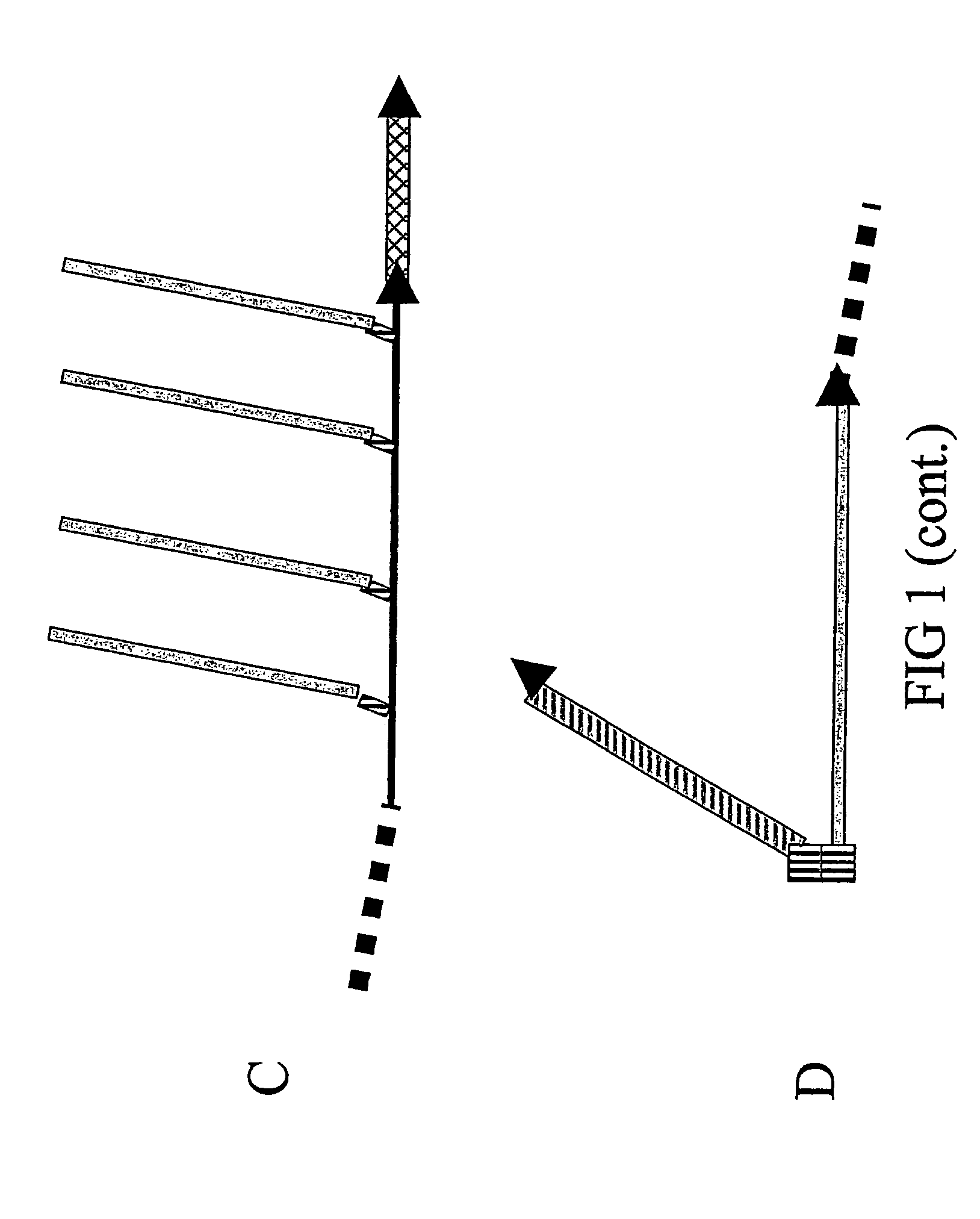Composite peptide compounds for diagnosis and treatment of diseases caused by prion proteins
a technology of prion proteins and compound peptides, applied in the field of compound peptides, can solve the problems of long methods (weeks), but this is far from ideal
- Summary
- Abstract
- Description
- Claims
- Application Information
AI Technical Summary
Benefits of technology
Problems solved by technology
Method used
Image
Examples
example 1
[0229] Immunizations in Conventional Mice with Classical Peptide-Carder Protein Conjugates for the Production of PrP Specific Antibodies
[0230] This example is included to show how to produce antibodies against bovine PrP in conventional mice by immunization with synthetic PrP peptides conjugated to a classical carrier protein (ovalbumin). The results show that the success rate of obtaining such antibodies is surprisingly high, taking the high similarity between mouse and bovine PrP sequences into account.
[0231] Peptides were synthesized as carboxamides by the classical Fmoc / in situ TBTU / HOBt activation solid phase method on Rink-MBHA resins as described in example 4. An additional cysteine residue was coupled at the N-terminal amino acid. After synthesis, work-up and analysis by HPLC-MS, the peptide was coupled to maleimide-derivatised ovalbumin by the following method:
[0232] Ovalbumin (Sigma, grade V, A-5503) was dissolved at 10 mg / ml in 0.1 M sodium hydrogencarbonate, pH 8.2 an...
example 2
[0237] Coupling Peptides to Backbones
[0238] Solely to illustrate the usefulness of a dipyridyldisulfide coupling method for coupling peptides to a backbone, model experiments were performed using peptides for which antibodies were already available.
[0239] The basis of this method is the generation, either in the backbone peptide or in the antigenic peptide of an activated thiol group either by activating a free thiol (from cysteine) by the Aidrithiol reagent (2,2-dipyridyldisulfide). The PrP peptide acetyl-CWGQGGTHGQWNKPSK was coupled to the backbone CVAKLEAKVACLEAKVAKLEAKG (with and without N-terminal palmitate) and analysed by Western blotting using a previously produced antibody raised against the ovalbumin-coupled peptide. First, the PrP peptide was reacted with 2,2-dipyridyldisulfide in solution, desalted on PD10 (Amersham Biosciences) and then reacted with the backbone in solution. The extent of coupling could be followed by measuring the release of pyridine-2-thione ar 343 ...
example 3
[0241] The Design of Preferred Composite Peptides According to the Invention
[0242] Solely to illustrate the principles underlying the design of the composite peptides of the invention some core structures are described with reference to FIGS. 5, 6 and 7.
[0243] One favoured model for a major conformational transition taking place in the PrPC to PrPSc transformation is depicted in FIG. 5A / B and is based on the conformational epitope corresponding to the PrPSc-specific antibody 15B3 (Korth, C., et al., 1997, Nature 390, 74-77): The most N-terminal α-helix of the globular domain of PrPC is changed into two β-strands making up a new, PrPSc-specific 4-strand β-strand (FIG. 5B), in which strands 2 and 3 derive from the α-helix. This means that a simple, PrPSc-specific epitope mimic can be formed by linking the sequence of β-strand 2 with that of β-strand 3 in a conformation resembling the hairpin antiparrallel structure found in PrPSc (FIG. 5C). To achieve a coupling of this epitope mimi...
PUM
| Property | Measurement | Unit |
|---|---|---|
| Composition | aaaaa | aaaaa |
| Sensitivity | aaaaa | aaaaa |
| Tertiary structure | aaaaa | aaaaa |
Abstract
Description
Claims
Application Information
 Login to View More
Login to View More - R&D
- Intellectual Property
- Life Sciences
- Materials
- Tech Scout
- Unparalleled Data Quality
- Higher Quality Content
- 60% Fewer Hallucinations
Browse by: Latest US Patents, China's latest patents, Technical Efficacy Thesaurus, Application Domain, Technology Topic, Popular Technical Reports.
© 2025 PatSnap. All rights reserved.Legal|Privacy policy|Modern Slavery Act Transparency Statement|Sitemap|About US| Contact US: help@patsnap.com



